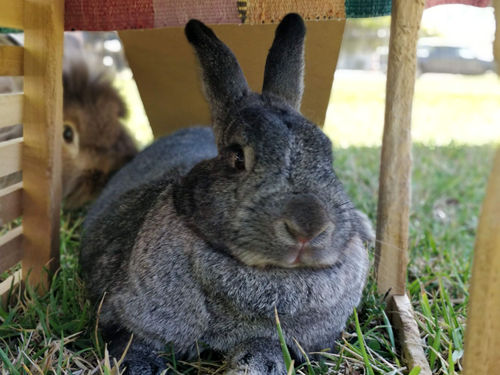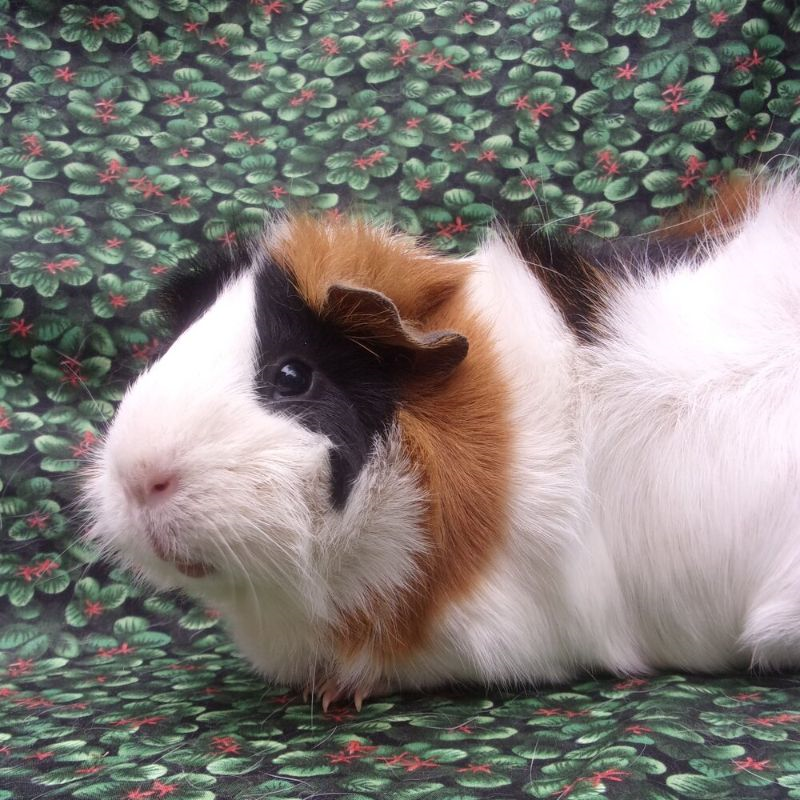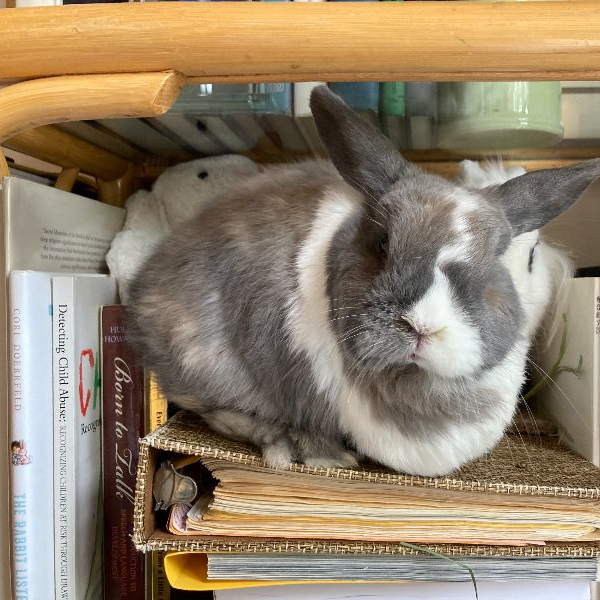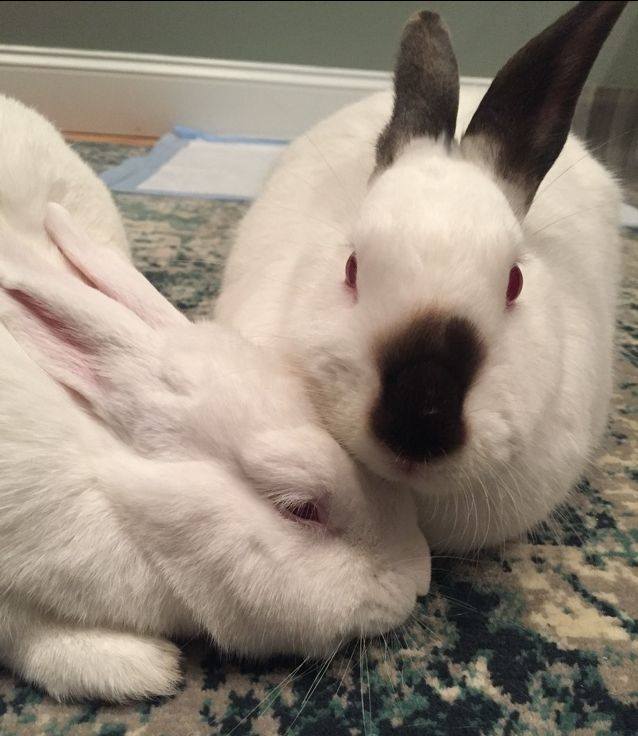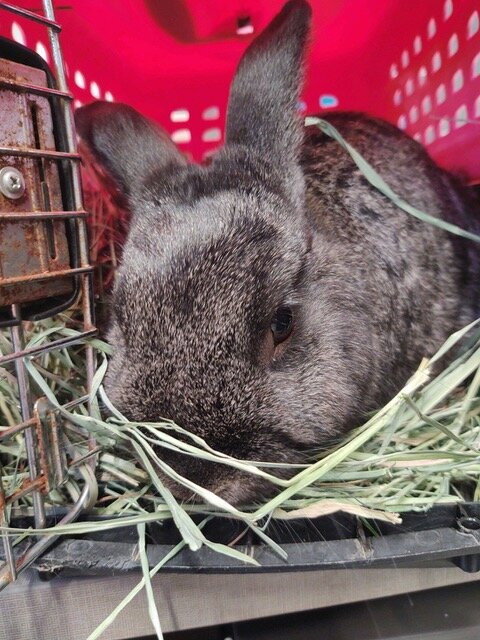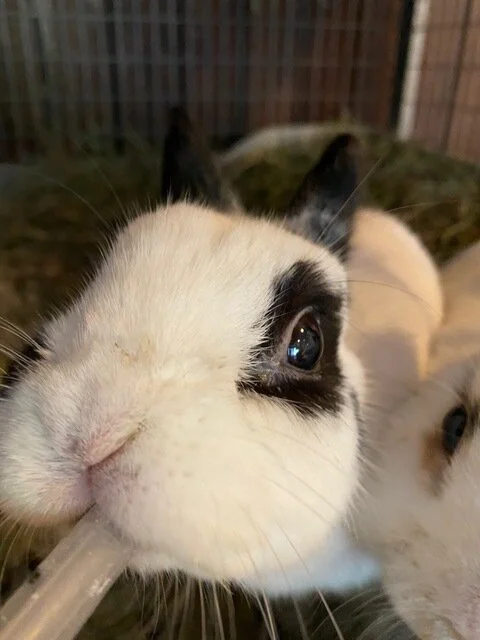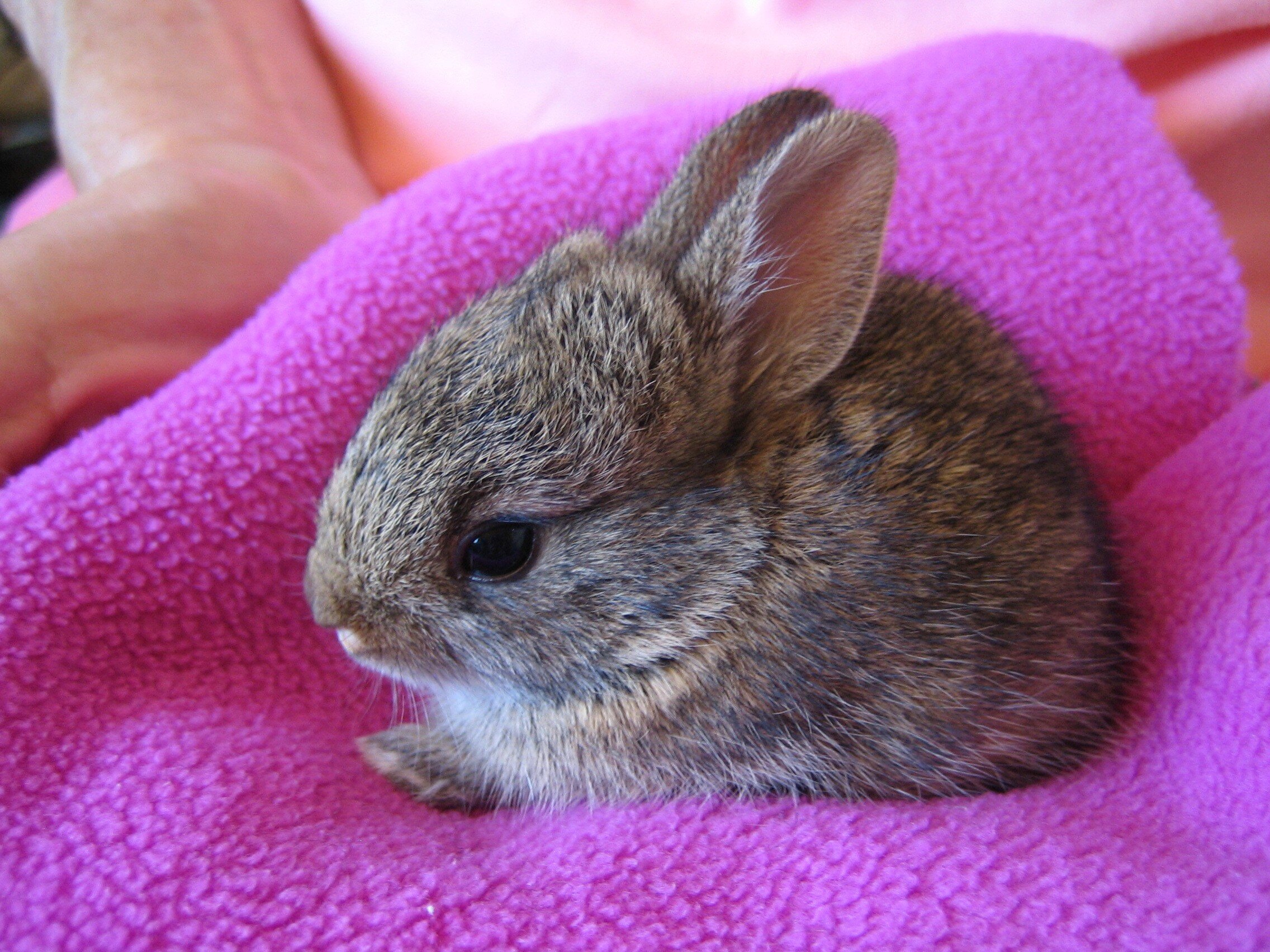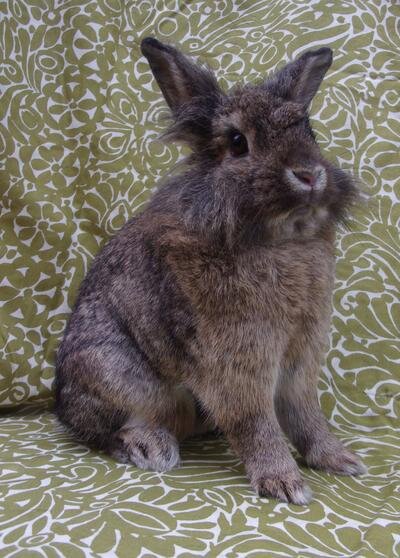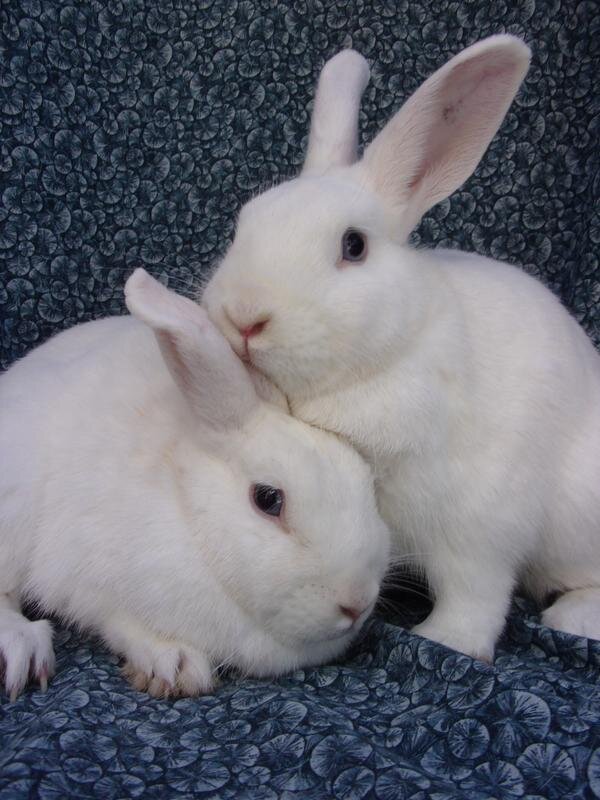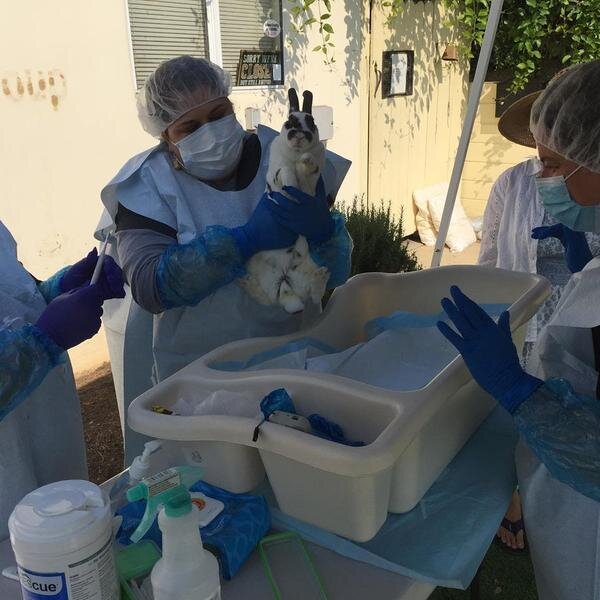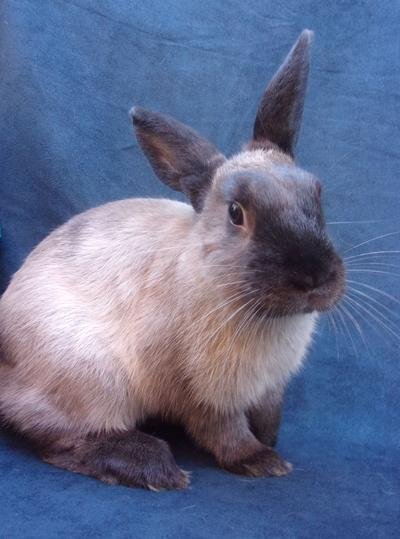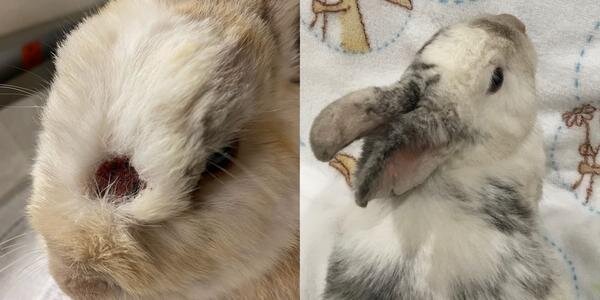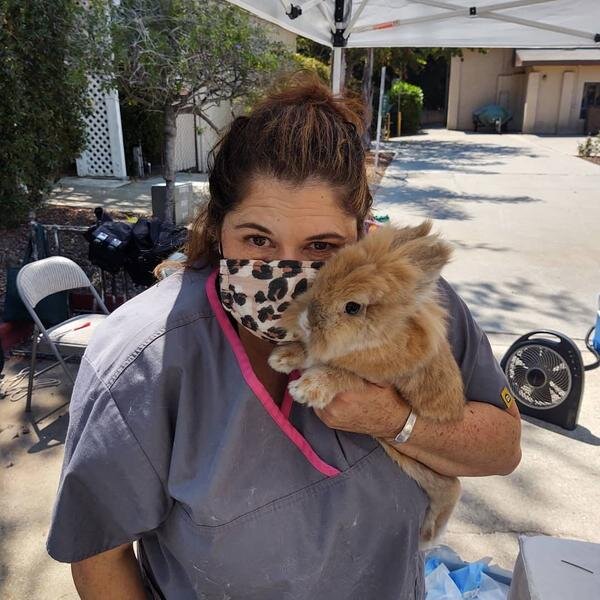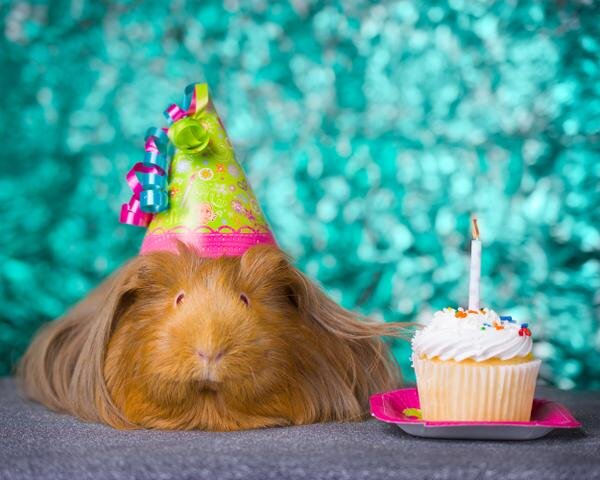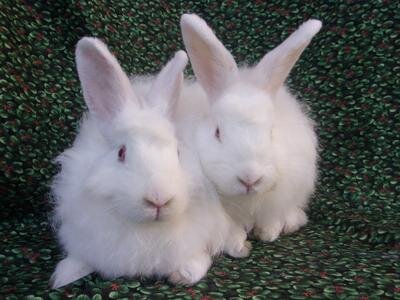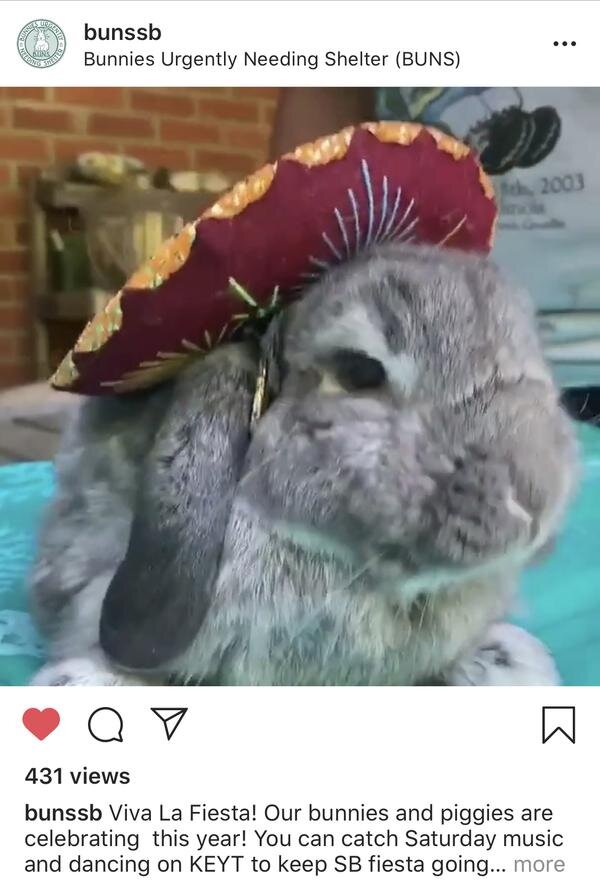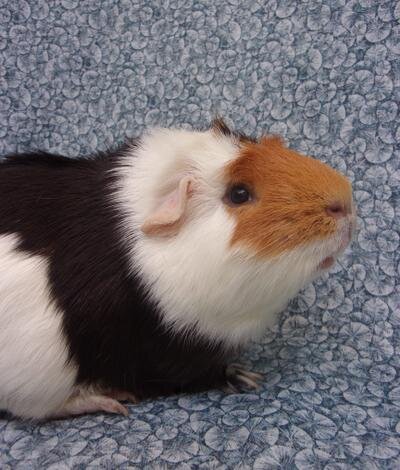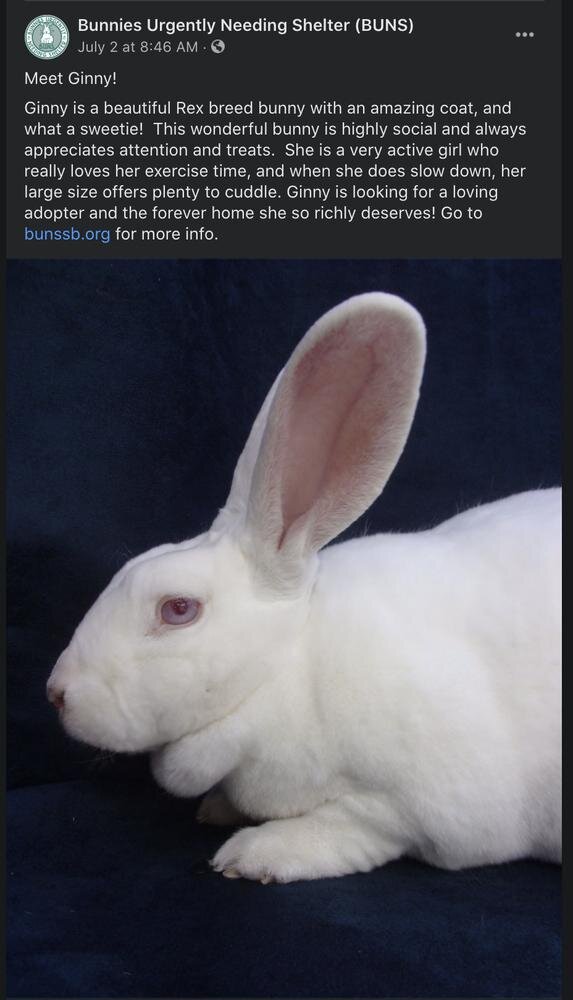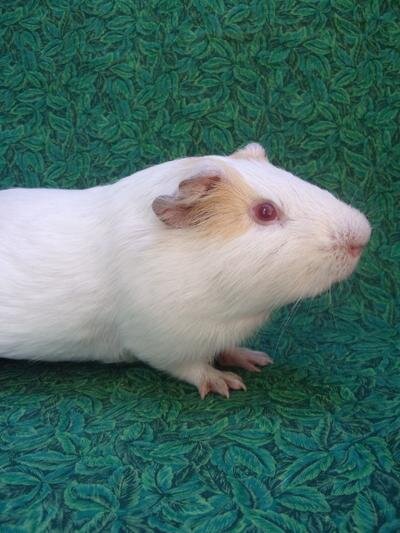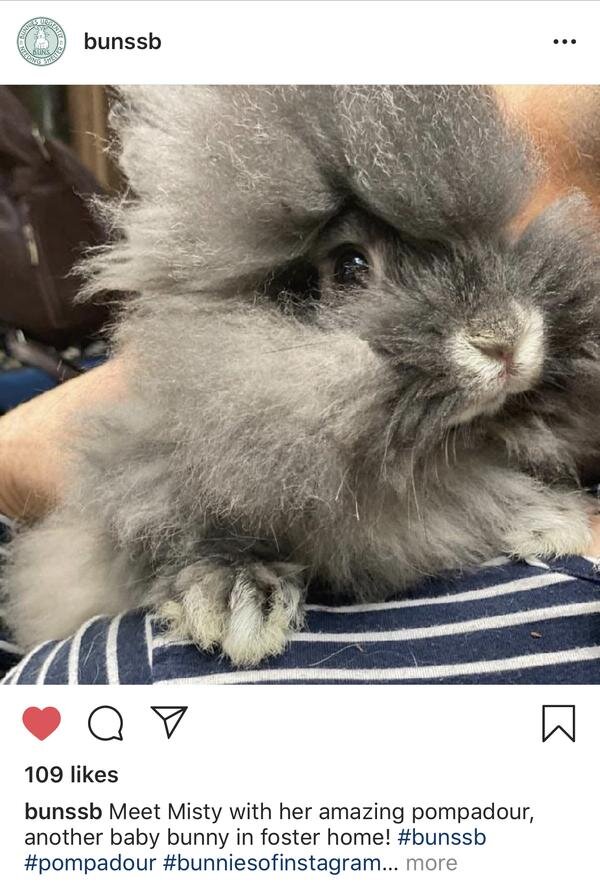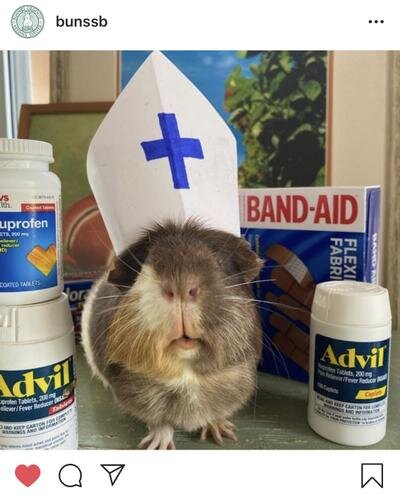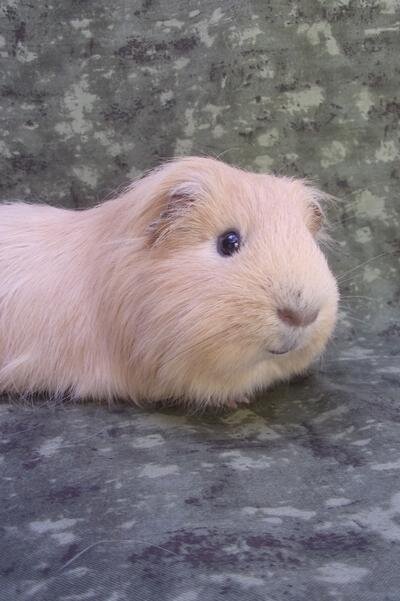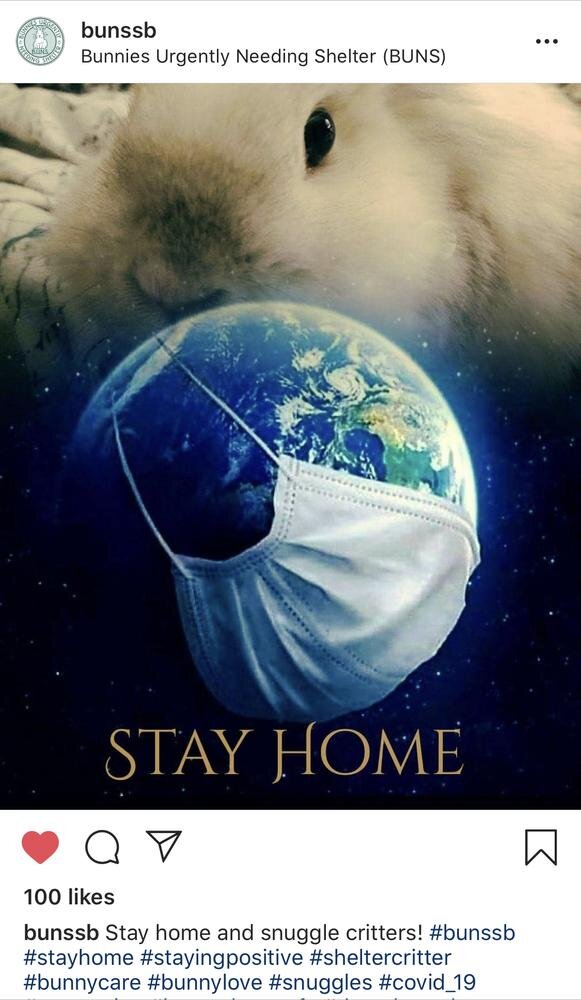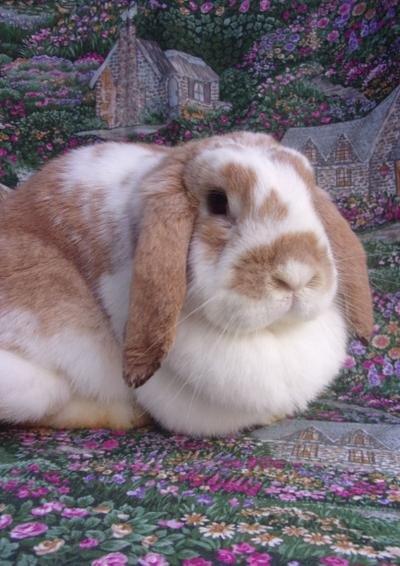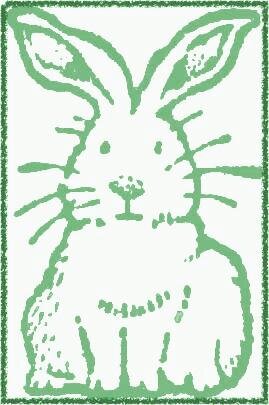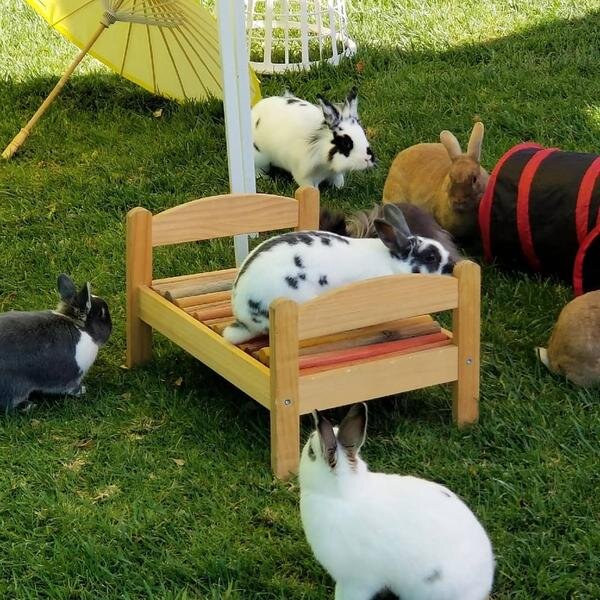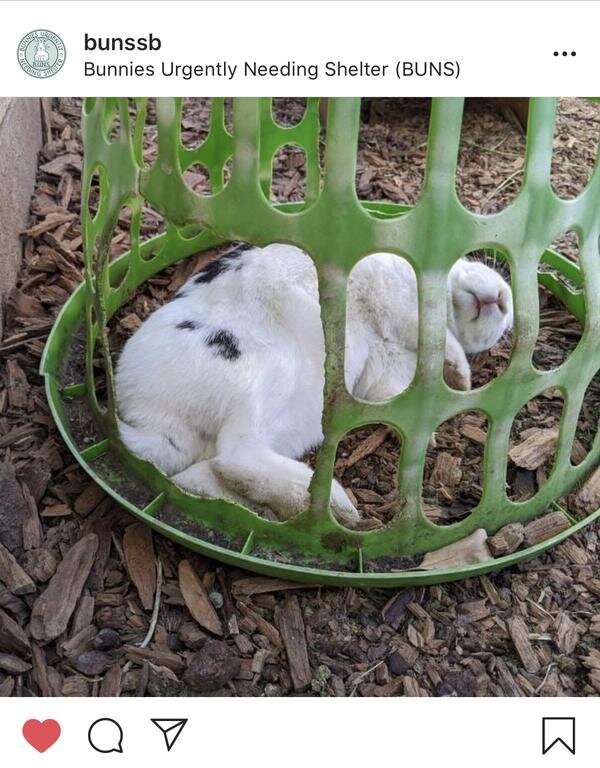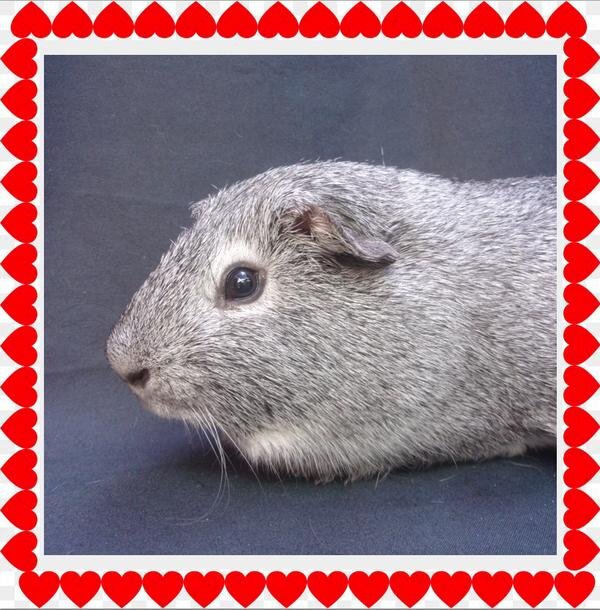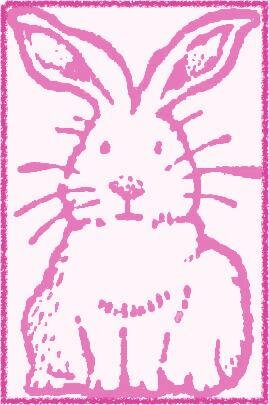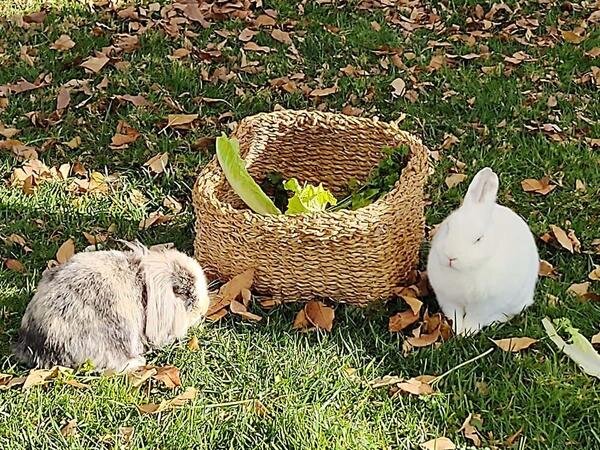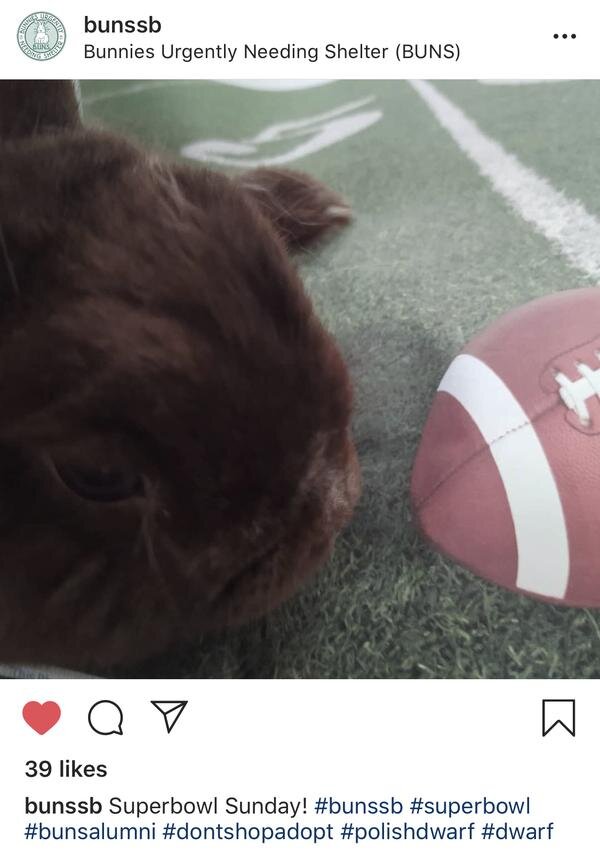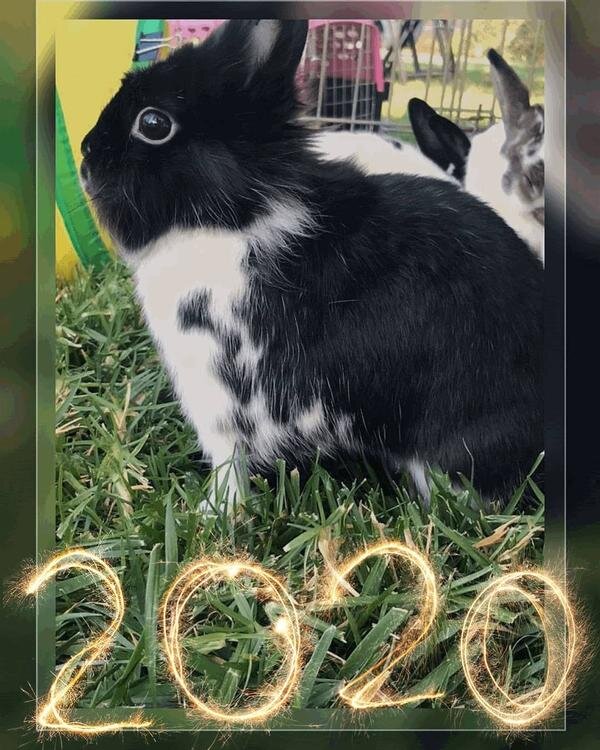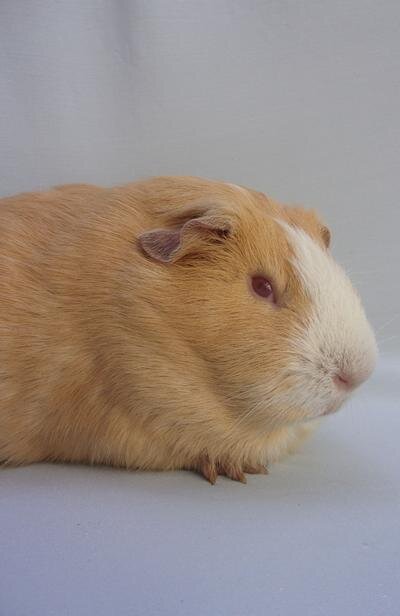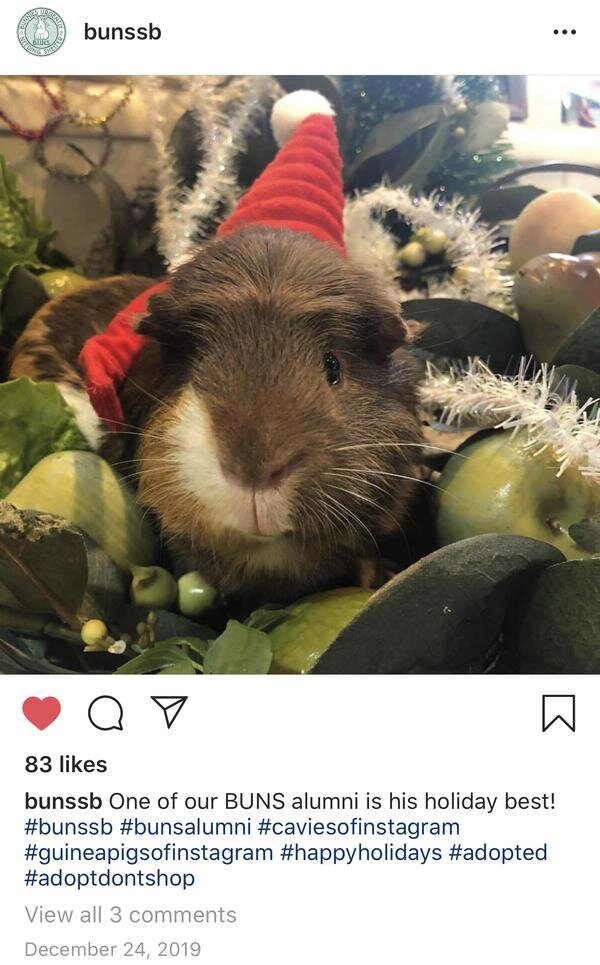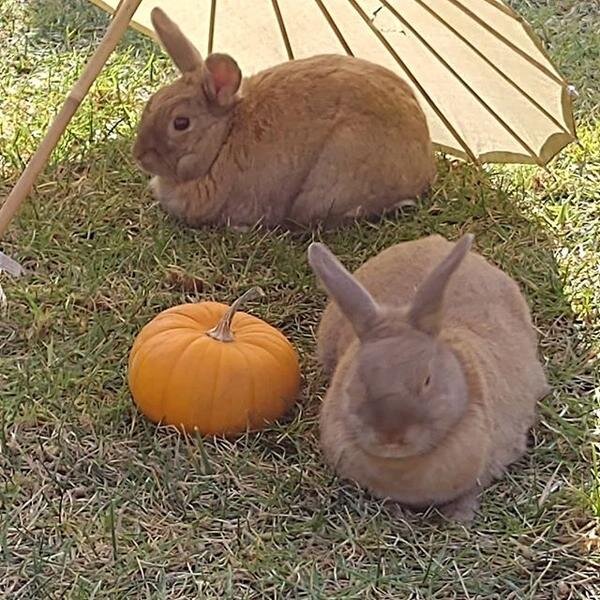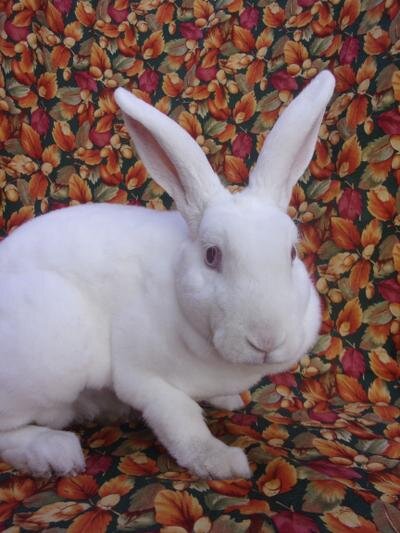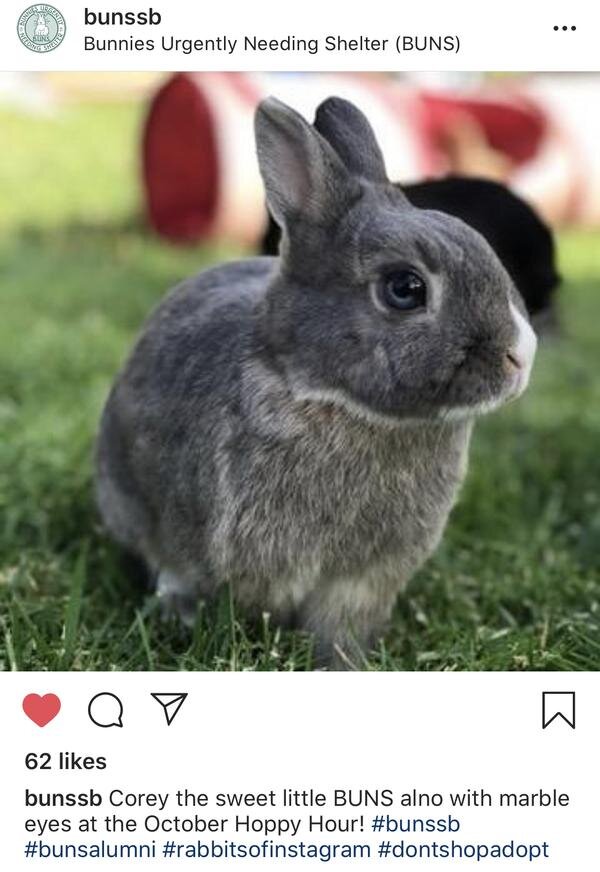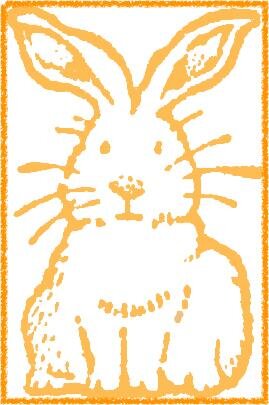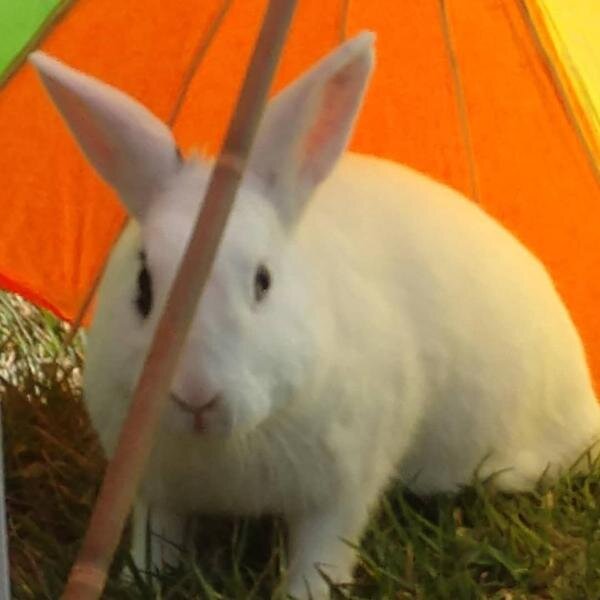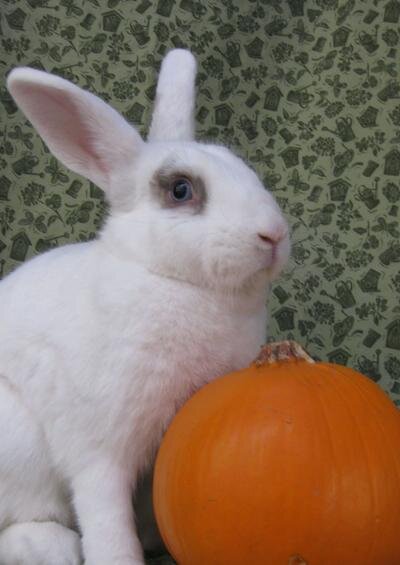Subscribe to our newsletter.
The Carrot Tribune has changed to quarterly.
The Carrot Tribune - May 2024
The Carrot Tribune
May 2024
Hoppy Hour and Pignic this weekend!
Come join us at Hope Elementary School this Saturday, May 25th, from 12 to 3:00 pm for our Hoppy Hour and Pignic! Health checks & grooming will be available!
Sign up to attend here!
Volunteers are also needed! If you are interested in helping out BUNS, please email Russ.helfand@bunssb.org for details!
Exciting New Partnership!
(picture to follow)
BUNS is so happy to announce that we have partnered with Dr. Sinai and ASAP cats! We are now able to safely spay and neuter the 51 buns that have been patiently waiting to go to their forever homes! Thank you @riviera_mobile_vet and @asapcats for helping us move forward!
Bunny and Guinea Pig of the Month
Onyx (picture to follow)
This beautiful lady bunny is as glossy and sleek as the gemstone of the same name. She has a quiet, gentle personality, is easy to handle and very much enjoys a long petting session. Onyx also has impeccable litter habits, so if you're the fortunate person who adopts her she will grace your home with good manners, elegant looks and a loving nature.
Patches (picture to follow)
This tri-colored, American breed guinea-pig is a sweet boy who has been waiting very patiently for his new family to come find him. He is quite gentle, is happy to be held and loves to snuggle in a lap. This lovely guinea-pig will bond deeply with the lucky human that discovers and adopts him.
Come visit us at BUNS to meet these cuties and many others! BUNS is located at SB County Animal Services on 5474 Overpass Rd. in Goleta. Our hours are 2 to 4 p.m. Tue-Sun and 12-4 pm on Saturday, or by appointment. Go to www.bunssb.org, call (805) 683-0521, or email info@bunssb.org for more info!
Myxomatosis risks increase!
By Jean Silva
Mosquitos are the deadliest animal on earth. Each year their bites inject viruses and parasites that kill over 500,000 people. In southern California mosquitos can also carry the deadly myxoma virus which causes myxomatosis that kills rabbits. Introduced into Australia, myxomatosis is estimated to have killed over half a billion feral domestic rabbits in two years. Pet rabbits in southern California will die of myxomatosis if bitten by a mosquito, flea or other biting insect carrying the myxoma virus on their proboscis. The virus does not affect people or other pets. Warmer weather, shorter winters and lots of standing water mean larger mosquito populations. This year Santa Barbara County will have a bumper crop of mosquitoes. The risk of myxomatosis will increase as the number of mosquitoes increases. Since there is no vaccine for myxomatosis, prevention is a must.
Protect your bunny from exposure to mosquitos and other biting insects by:
Housing them indoors;
Maintaining your door and window screens;
Draining sources of standing water around and in your home;
Using regular flea treatment on dogs and cats that go outdoors; and
Adding mosquito fish to ponds and other water sources.
Protecting your bunny will also protect your family from invasive mosquitos that can carry diseases affecting people. For information and resources on controlling mosquitos go to the Mosquito and Vector Control district of Santa Barbara County.
ABOUT BUNS
BUNS is an independent non-profit corporation dedicated to the care and welfare of rabbits and guinea pigs. BUNS works to find bunnies and guinea pigs permanent homes, and educates the public on caring for their guinea pig/rabbit companion.
Copyright © 2022 BUNS, All rights reserved.
Our mailing address is:
Bunnies Urgently Needing Shelter
Santa Barbara County Animal Shelter
5473 Overpass Rd
Santa Barbara, Ca 93111
The Carrot Tribune - August 2021
In this issue...
Bunnies of the Month for August
Rabbit Chiropractic Care
BUNS is closed to the public due to Covid-19. We're looking forward to reopening the shelter, restarting Hoppy Hour, and holding Basic Bunny and Guinea Pig classes again. Until it's safe to do so, we are here for the rabbits and guinea pigs and for bunny and piggie parents.
Adoptions by appointment only. Contact 805 683-0521 or info@bunssb.org. Hay Sales are available on the Santa Barbara County Animal Shelter Front Porch 24/7.
Bunnies of the Month
These two cuties form a beautiful pair of bonded bunny boys - each unique in personality and appearance. They love their run around time, and do appreciate pets and treats. All in all, they are a wonderful duo who would love to meet a great adopter. Rumple and Humpty would love to start their very own fairytale in a loving forever home!
Rabbit Chiropractic Care
How to Have a Happy, Healthy, Hopping Bunny!
By Dr. Sherry D. Gaber
I worked at a wildlife center for 5-1/2 yrs near Santa Fe, NM and I've given animal chiropractic care to many creatures — from a hummingbird, a porcupine, a black bear, and mountain lion cubs to a 1,400 pound pet buffalo named Charlie. So the first time a client came to me with her two white bunnies I was delighted to share my skills for better movement and increased health.
I asked the owner what her concerns were for her bunnies, Snowflake and BoPeep. Snowflake's rear legs weren't as strong as they used to be and she wasn't thumping any more. BoPeep had a head tilt and her balance wasn't great, and it wasn't due to an ear infection. The owner wanted answers to help both of them and asked if I thought I could help. My answer was "Yes” for both bunnies!!!
I understand the working connections of the nervous system from the rear legs to the brain, and that a misalignment of the skull or first neck bone (vertebrae) can prevent proper rear leg function at any age.
For now let's talk about rear leg weaknesses because it's one of the first symptoms of an upper neck misalignment. Simply stated: there are big nerves (communication fibers) that originate from the lower leg muscles which talk to the brain. The brain needs to hear from these fibers clearly in order to function efficiently. These communication wires travel up the spinal column (back bone) to a part of the brain that interprets how the legs are moving and communicates back to the rear legs to PUSH! But when there's an upper neck misalignment this communication is decreased and there's less PUSH-power in the rear legs. If the back legs can't PUSH well, then, to compensate the front legs have to pull more, which leads to a sore/tender back and shoulders.
As an upper cervical specialist I understood what Snowflake needed — a gentle correction of the first cervical vertebrae. And when I examined Snowflake’s neck I did feel that the first cervical vertebrae was out of its perfect placement, ultimately not allowing that special nerve fiber to work well, and for the rear legs to communicate to the brain.
For the treatment I gave Snowflake a gentle correction of the first neck vertebrae and immediately the owner and I saw Snowflake thump with her left rear leg and then with her right rear leg!!! When I examined the rest of Snowflake, her back was relaxed and I gently stretched out her front legs! It was all good!!!
I knew Snowflake would be bouncing around her house feeling fine in her body and letting her owner know where she was with that great rear leg THUMP! In addition, Snowflake now had less stress in her body. Without the stress of trying to move naturally her body can remain as youthful and mobile as possible. The owner was very happy to hear this and I was very happy to tell her that's just how the body wants to work.
In my next article we will talk about BoPeep's head tilt and the effects it has on body balance, coordination, indigestion and rear leg weakness. Stay tuned!
Dr. Sherry D. Gaber
Certified Animal Chiropractor
505-690-1107
www.sherrygaberdc.com
About BUNS (Bunnies Urgently Needing Shelter)
BUNS is an independent non-profit corporation dedicated to the care and welfare of rabbits and guinea pigs. BUNS works to find bunnies and guinea pigs permanent homes, and educates the public on caring for their guinea pig and rabbit companion.
Your contribution can go a long way towards helping rabbits and guinea pigs in Santa Barbara. Donate today!
The Carrot Tribune - May 2021
In this issue...
Guinea Pig of the Month
Luna Finds a Home with Suki
Moving with Rabbits?!
BUNS is closed to the public due to Covid-19. We're looking forward to reopening the shelter, restarting Hoppy Hour, and holding Basic Bunny and Guinea Pig classes again. Until it's safe to do so, we are here for the rabbits and guinea pigs and for bunny and piggie parents.
Guinea Pig of the Month
Petunia is a mature and composed lady piggy with wonderful manners and a calm disposition. She is very comfortable with humans, and really appreciates pets and cuddles. She is a wonderful Abyssinian breed girl with lovely coat and color. Petunia is looking for her forever home with a loving adopter and plenty of treats!
Luna Finds a Home with Suki
Editor's note: This story was contributed by BUNS volunteer Marlene
Luna Finds a Home with Suki
Editor's note: This story was contributed by BUNS volunteer Marlene
Suki, a beautiful, sweet, and smart Dutch rabbit, was adopted by me four years ago. BUNS had her malocclusion fixed so she had no front teeth, but she had a lot of brain power. In five minutes my daughter had clicker-trained her to sit up and spin in a circle. Now she can knock down tubes, jump through a hoop or over legs (all for a treat of course!). Everything seemed wonderful but she seemed a little lonely in spite of all our love and affection. Rabbits need other rabbits!!
Luna, a very curious and spirited Hotot/Lionhead mix, was brought into BUNS from the streets of Isla Vista. She had to be smart to survive that! And since Luna also had to have her front teeth removed they seemed a match made in bunny heaven.
Suki did not like her territory being invaded by another female rabbit. Over time and with a lot of bonding help from BUNS they have become the best of friends.
Moving with rabbits?!
Editor's note: this story was contributed by BUNS volunteer Dana
Moving house is stressful in general, but moving with rabbits adds another layer. When we were preparing to move cross-country (California to Massachusetts), our pets (4 rabbits, 1 cat, and 1 leopard gecko) were my biggest source of anxiety. After doing some research on it, I learned that moving is a huge reason why pets are surrendered at shelters. Sometimes owners’ new homes don’t accept pets, or the owners don’t think their pets will be able to handle it. We would never dream of leaving our pets behind if we had any say in the matter, but I was especially worried about the stress of the journey, as one of my bunnies is 12 years old! I can happily tell you now we did it, and I was very impressed with how well our pets handled it. They are all very happy now in our new home!
One of the first big decisions we had to make was whether to fly or drive. The benefit of flying was that it would be shorter travel time overall. But it would require two trips to get all the pets there (very limited airlines even allow rabbits in the cabin, and those that do don’t allow more than 2 rabbits per passenger), and we would have much less control over the situation if a problem occurred. Our vet asked what we would do if we got stranded in an airport overnight with the pets (in the middle of a pandemic, no less), a horrifying thought! Driving takes longer, but you have much more control over the situation. Most rabbits are also at least somewhat used to traveling in a car, but most have never been on a plane, so you don’t know how they will react to the pressure changes or new sounds. So, we decided driving was the right move. Whether you decide to drive or fly will likely depend on how far you are going, how many rabbits you have, and what your vet recommends!
Before our trip, all of the pets had a check-up with our vet, and she set us up with first-aid supplies we might need on the journey: Metacam, gabapentin (in case anyone got overly stressed), lactated ringers (subcutaneous fluids), and plenty of recovery food and syringes. We also had some oral fluids (lots of bunny owners use Pedialyte, and there are some bunny-specific products out there now), and simethicone. If you’ve never given subcutaneous fluids, your vet can show you how to do it. All of these things are good to have in your bunny first-aid kit anyway! We brought along lots of favorite hay from home, and a cooler so we could have fresh greens on hand (we bought some along the way as well).
We planned out our route to reduce the risks of hitting bad weather (we were driving in early March) and booked rooms at La Quinta Inns along the way. They are known to be pet friendly, and their room set-ups worked very well! Many had large tiled areas, so we could set up x-pens for the bunnies and not have to worry about the carpet.
The journey took 6 days, and we ended up driving 6-12 hours each day, including a longer break halfway through the day (usually around 45 min). In retrospect the 12 hour day was too long, but 8-9 hours was very manageable. Most of our days were around 8 hours. The buns were in carriers (1 pair per carrier) that had a layer of pine pellet bedding with hay on top. I had water crocks clipped to the doors with a little water in them. Some of the buns did drink a bit during the day and on breaks. During the breaks I offered the buns favorite wet greens, which usually they would nibble on eventually. We stopped a few times at supermarkets to get different types of herbs to entice them (parsley, kale, and carrot tops were usually the winners!). It usually took at least 20 minutes for them to calm down enough to eat. On a couple occasions I had to give a bunny some recovery food during the break, but thankfully with some banana mashed in she ate it willingly. It would have been a huge hassle to try to actually syringe feed her in the car, but I was prepared to do it if necessary! My main goal was to make sure the rabbits ate SOMETHING every 4-6 hours, even if just a few bites.
Each evening we would set the buns up in the motel, and give them their salad and lots of hay. Getting the luggage cart from the motel was essential, as we had tons of stuff (3 crates, two x-pens, a big tote of hay, litter boxes, etc.). Usually, they would start eating hay right away and would run around exploring and stretching their legs. The first night I used pee-pads, but found they seemed happier and ate more when they had their actual litter box filled with hay. They also seemed very happy to have their favorite chew toys. In the morning, we would sweep the room very well after loading everyone back into the car and take out the trash to the dumpster. We didn’t have any issues with the motels!
One bunny, Myra, did need some extra supportive care. After about the second day, she didn’t have a great appetite, so I ended up syringe feeding her, giving Metacam, and giving oral fluids morning and evening, basically for the rest of the trip. I also gave her and another bunny subcutaneous fluids on one evening after a very long day of driving (too long, in retrospect). Myra would always eat on the breaks in the car, so I think either she didn’t feel comfortable being in unfamiliar places, she was anticipating the driving, or the medicines helped her feel better. I think if our trip had been any longer, I would have taken a full day break at some point just to let everyone rest. Surprisingly, my 12 year-old bun handled it like a champ! He wouldn’t eat when the car was moving, but always ate on the breaks and behaved normally in the hotel.
Overall it went much better than I expected. Not to say I want to do it again anytime soon… but if you prepare properly it can be done without too much stress!
The Carrot Tribune - April 2021
In this issue...
Bunny of the Month
Knuckles Finds His Way Home
Cooperative Care
BUNS is closed to the public due to Covid-19. We're looking forward to reopening the shelter, restarting Hoppy Hour, and holding Basic Bunny and Guinea Pig classes again. Until it's safe to do so, we are here for the rabbits and guinea pigs and for bunny and piggie parents.
Bunny of the Month
Tiki is a calm and sweet chap with some wild Lionhead fur! His mixed breed good looks extend to a very soft and petable coat with snow white coloring, and beautiful pink/lavender eyes. This well rounded bunny is looking for a human who will give him a loving, forever home!
Knuckles Finds His Way Home
(a true story)
Knuckles was lost. He left his yard to visit that nice patch of clover. At the sudden barking of a dog Knuckles began to run. He ran until the barking stopped. He did not want to go back past the dog. He did not know how else to go home. Knuckles was lost.
A nice voice called to him and a gentle hand reached down to pet his head. Knuckles looked up. “Will you take me home?” The lady picked him up and walked to a home.
“This is not my home!” Knuckles began to wiggle.
“Just hop inside the cat carrier,” she popped him in and closed the door. Then she put him in a car and drove off in the wrong direction. When the car stopped, the woman carried him into a building that smelled of dogs.
“This is not my home!” Knuckles hopped to the back of the carrier to hide. Hands reached inside and began to pull him out.
“Cute bunny. Let’s see if he’s micro chipped.” A flat plastic thing rubbed up and down his back and began to beep.
“This is definitely not my home! That is no way to treat a bunny,” he thought as he was stuffed back into the carrier.
“Well, he’s micro chipped. Leave him in the carrier while I call his home.”
Soon Knuckles heard the happy voices of his family who took the carrier to their car. When the car stopped, Knuckles looked out the window.
“THIS IS MY HOME!” And though no one could see it inside the carrier, he gave a little binkie.
Knuckles found his way home because his family had him micro chipped. No bigger than a grain of rice, the microchip connects Knuckles to information about his family, address and phone.
Sadly, since 1992 no more than 10 stray bunnies out of 2,900 found their way home from the shelter. None of them were microchipped. A micro chip makes all the difference. After Hurricane Katrina, the pets that were micro chipped found their owners. Micro Chipping your pet is part of emergency preparations. Do it today. Your vet can microchip your rabbit. Or, you can contact BUNS for a microchip appointment. Call 805 683-0521 or email info@bunssb.org.
Cooperative Care
By Jean Silva
“Give her 1.5 cc’s by mouth twice a day.” the Vet Tech said handing me a bottle of medicine, a syringe and Fang’s carrier.
“How am I supposed to do that?” I thought as I smiled and nodded.
Once home, I checked the internet and found all sorts of helpful suggestions:
Wrap your pet in a towel like a burrito. No good. It took both hands to keep Fang wrapped in a towel.
Have someone hold the bunny for you. My husband held Fang. Fang tried had to bite my hand whenever it came close to her mouth. The burrito had been a big mistake.
Finally, I squeezed drops of medicine onto a mini shredded wheat until it soaked in. Fang, ate it right up. Problem solved – sort of.
In those days I gave medicine to the sick animals at BUNS. I tried many things. Pry the mouth open and shove the pill down the rabbit’s throat with a finger. Ouch. It worked for the vet. Use a Pet Pillar instead of your finger to place the pill in the back of the mouth. The pet spit the pill out. I held the mouth closed until the pet swallowed. If looks could kill. Mash the pill with banana and serve it on a tiny china plate. If the pet refused to eat it, draw the mixture up in a syringe. Hold the bunny and squirt it into the mouth. Small wonder the everyone began to back away whenever I came near.
Then I began to see zoo animals that voluntarily came forward and stood still for an injection. I bet they never even tried to wrap the hippopotamus in a blanket like a burrito. Hmmm. My friend Peggy Hogan trained her horses to voluntarily participate in dental exams, eye treatments and wound care. People were calling it Cooperative Care. Wow! Did I really need to pick up, immobilize and pry open an animals mouth to give it medicine. What if I just offered the meds to the bunnies?
I started with a honey flavored liquid anti-inflammatory (Meloxicam, also known as Metacam) that most bunnies seemed to like. I’d draw up the medication in an oral syringe and make a small “bead” of the stuff on the tip of the syringe. Then I would put the tip of the syringe right under the bunny’s nose near the mouth and gently move it back and forth until I felt the bunny take the syringe into its mouth. As I felt the bunny lightly chew or move its lips on the syringe I would slowly depress the plunger. If the bunny stopped so would I. When they began again, so would I. Some of the bunnies began run toward me as I approached with the syringe. That’s a good sign.
When Clyde was prescribed SMZ-TMP I picked him up, held him still, lifted his lip and gave him the medicine. He hated it. He would run away when I approached. That’s a bad sign. Well, I thought why not? I loaded the oral syringe and tapped it on the enclosure wire to make noise. Clyde came over, sniffed the syringe and drank the whole thing. The medicine was fine. Clyde just hated being caught and immobilized.
I offered the syringe when Bindi was prescribed SMZ-TMP. She was happy to drink the medication from an oral syringe. Bindi lives with her mom, Ponta. When Ponta saw Bindi happily drinking her medication, Ponta wanted some too. I started giving Ponta a rabbit pellet for each dose of medication Binda drank. One night as we sat on the couch, my husband asked, “Why are Ponta and Bindi standing there?” I looked at the bunnies who were liked up at the edge of their enclosure.
“They are waiting for their medicine.” I said, all cool. WOW! Not only were they voluntarily taking medicine, they asked for it.
Next I tried Juniper the guinea pig. She was new to the shelter. But she took treats from my hand. So why not medicine. Juniper swallowed the SMZ-TMP and tried to pull the syringe out of my hand.
When the Vet Tech hands you an oral medication, consider just offering it to your pet. You might be as surprised as I was. If your patient has a companion, please bring something for that bunny as well. Bunnies and guinea pigs are more comfortable in groups and no one wants to miss out on treats. Engaging both animals gets good momentum going.
It helps if your bunny or guinea pig is used to taking food from your hand. So long before your bunny or guinea pig gets sick, offer some parsley, cilantro or food pellets from your hand. Do that regularly.
If they don’t take medicine voluntarily, try changing the delivery method. I have had good success squirting SMZ-TMP onto spoon sized shredded wheat for example. Rabbits will eat the SMZ-TMP laced biscuit even if they declined straight SMZ-TMP. Mixing a medication with banana can work too. Tossing it as dressing on a salad is another possibility.
If none of those things work, then it may be time to get out the towel and try a bunny burrito. But try something else first. Your bunnies would appreciate your thoughtfulness.
Peggy Hogan can be found on www.clickertraininghorses.com
The Carrot Tribune - December 2020
In this issue...
Our New Look
Bunny and Guinea Pig of the Month
Our Wish List
Year in Review
Please note, we're still closed to public due to Covid-19. We're looking forward to reopening the shelter, restarting Hoppy Hour, and holding Basic Bunny and Guinea Pig classes again. Until it's safe to do so, we are here for the rabbits and guinea pigs and for bunny and piggie parents.
Our RedesignedWebsite
Our website has a fresh coat of paint! Hope you like it!
Guinea Pig of the Month
Goku is a super hero!
This handsome piggy boy is a calm and sweet boy with beautiful coat colors. He is an amiable chap who is happy to sit for pets, and is a curious, active boy, too.
Goku would love to find his forever home and share lots of love with some lucky adopter.
Meet our Bunny of the Month over at bunssb.org/bunny-of-the-month!
Our Wish List
There are few things we can call normal this year, including our holiday season, but one thing that remains the same is the good feeling we get from sharing gifts and giving to those in need. If it would brighten your holidays and warm your fuzzy heart to give a gift to the rabbits and guinea pigs at BUNS while they wait to be adopted, here are some ideas for what would make the furries happy and the volunteers who care for them...
Palm plates (for healthy, safe chewing delight)
Whisk brooms
Oxbow treats
Oxbow supplements: Digestive support and Joint Support
Pet safe pine cones
Willow wreaths
Willow balls and baskets, tents and tunnels
Pet safe, natural material chew toys
Colored laundry baskets (to use as hidey places in the exercise pens)
Good pellets for bunnies and guinea pigs can be ordered from BUNS' Amazon Wish List
Binkybunny.com and Bunnybytes.com are great resources for toys, treats and more
Year in Review
2020 has been a challenging year for BUNS and we are thankful that it is almost over. The Covid 19 shutdown changed both our volunteer and our adoption programs. Hoppy Hour, Pignic, Basic Bunny and Guinea Pig were put on hold and grooming came to an end. Hay sales moved to the front porch of the shelter. Vets put non-essential care like spay neuter surgeries on hold. Then Rabbit Hemorrhagic Disease Virus 2 (RHDV2) began its march toward Santa Barbara County. We quarantined incoming rabbits, began the process to import the RHDV2 vaccine from Europe and focused rabbit adoptions on indoor homes which are safer than outdoor homes.
But, through it all we adopted rabbits and guinea pigs. Through November, 161 rabbits and guinea pigs found their forever homes. All adoptions make us happy, but here is one story that was special. Sugar came to the shelter in August of 2019, a lovely white Mini Rex with red eyes. She was born and lived in a backyard with her sister. When the girls became teen-aged they started to fight. The family kept her sister and brought Sugar to BUNS. She must have wondered why. Like many rabbits with red eyes, Sugar was overlooked by all the families that came to the shelter. Red eyes are just too strange. Manny months and many families passed by Sugar. Covid 19 came, the shelter closed to visitors and finally a year passed. Sugar was still at BUNS. At last, a family that had fostered rabbits, decided they wanted one of their own. Sugar caught their eye. She was just right for them. Sugar became a house bunny with a loving family and a room of her own. Sugar proves there is a home for every bunny and Guinea Pig.
They may leave BUNS, but they will always be BUNS bunnies and piggies. We watched RHDV2 cross the South West and enter California, worrying about our shelter rabbits and all the BUNS bunnies living in their new homes. We partnered with Dr. Haskell to import 1,000 doses of RHDV2 vaccine. We sent 150 doses to the Bunny Brigade in Ventura County. We sent vaccine to our County shelters in North County. We vaccinated the bunnies at BUNS. Then we reached out by Face Book and e-mail to rabbit families. Doctors Sostrin and Welton volunteered their time at vaccine clinics. The Elks Lodge #613 in Goleta gave us their parking lot for two clinics. We held other clinics at the BUNS shelter. So far we have vaccinated over 500 rabbits. We will do more. We have asked the County for help in finding a vet to staff a clinic in North County. In 2021 we will continue our South County Clinics as well.
Covid infections are surging again and the lives of people are disrupted by job loss and illness. But BUNS is still here. We are caring for rabbits and guinea pigs. We offer a safe place for pets of families that must move or who are just over-whelmed by all the challenges. We will find new homes. We will vaccinate rabbits. We look forward to a new year when for people will make everyone safer. We will be so happy to join you at Hoppy Hours and Pignics. We know those nails need trimming. Together we will get there. As always your help and support makes everything we possible.
As the year ends, so many groups are asking for help, but may we offer a paw? Your gift will shelter, feed and rehome homeless rabbits and guinea pigs. Your gift will vaccinate rabbits and give vet care to rabbits and guinea pigs. We cannot fix the world, but we can make it just a little better. Will you join the effort by clicking here: http://www.bunssb.org/donations/ Thank you.
About Bunnies Urgently Needing Shelter
BUNS is an independent non-profit corporation dedicated to the care and welfare of rabbits and guinea pigs. BUNS works to find bunnies and guinea pigs permanent homes, and educates the public on caring for their guinea pig and rabbit companion.
Your contribution can go a long way towards helping rabbits and guinea pigs in Santa Barbara.
The Carrot Tribune - November 2020
In this issue...
Guinea Pig and Rabbit Costumes!
Bunny and Guinea Pig of the Month
Myxomatosis in 2020
In this issue...
Guinea Pig and Rabbit Costumes!
Bunny and Guinea Pig of the Month
Myxomatosis in 2020
Please note, we're still closed to public due to Covid-19. We're looking forward to reopening the shelter, restarting Hoppy Hour, and holding Basic Bunny and Guinea Pig classes again. Until it's safe to do so, we are here for the rabbits and guinea pigs and for bunny and piggie parents.
Costumes!
Mermocha always allows us to dress him up for all occasions. Piggies are so sweet and fun!
Bunny of the Month
Bumblebee is a sweet, cuddly girl with lovely blue eyes. She is an adorable Lop with a soft and lovely coat, and is very happy to have some petting and grooming time to keep her looking her best! It’s easy to fall in love with this wonderful bunny, and Bumblebee is ready to make some lucky adopter very happy!
Meet our Guinea Pig of the Month over at bunssb.org/bunny-of-the-month
Myxomatosis in 2020
By Jean Silva
With all the precautions for Covid-19 and Rabbit Hemorrhagic Disease Virus (RHDV2) its easy to forgo those for Myxomatosis. Don’t. Myxomatosis will kill your rabbit. There is no treatment. Prevention is the only answer.
Symptoms
A rabbit infected with the Myxoma virus may experience high temperatures, discharge from the eyes and nose, swelling at the base of the ears, eyelids, muzzle, and genitals. Red rimmed eyes, when they occur, are easy to see. Rabbits will be less active and their appetite may decrease. In some rabbits, death occurs before signs of the disease are readily noticed. In other rabbits, the appearance of the disease becomes marked. Eye lids will droop and appear half closed. Swelling will cause the ears to droop to the side. The rabbit will be slow to rouse as if in a stupor.
No Treatments Available for Myxomatosis
Sadly, there are no treatments available for myxomatosis. Antibiotics are ineffective. There are no viral suppression drugs for myxomatosis. The survival rate approaches zero. Euthanasia is the kindest course of action.
While the myxoma virus is deadly for rabbits, it does not affect other mammals. People, dogs, cats, birds, guinea pigs, ferrets, and other pets are not at risk.
The Virus and Wild Rabbits
The myxoma virus lives in the wild rabbit population (Sylvilagus bachmani). Unlike pet rabbits, the brush rabbit has developed resistance to the myxoma virus. Infected brush rabbits are the reservoir in which the virus survives. The virus relies on mechanical transmission to spread from rabbit to rabbit. Mosquitoes are the most effective vector. A mosquito inserts his proboscis into an infected rabbit and collects virus on the proboscis. That mosquito will insert the virus into his next victims. It is estimated that a mosquito can transmit virus to up to 5 subsequent victims. Fleas, ticks, flies and other biting insects can also transmit the virus.
Tracking Rabbit Deaths
No government agency tracks wild or domestic rabbit deaths due to Myxomatosis. Because RHDV2 is an invasive disease, State and Federal agencies are testing and tracking its spread. All of the dead wild rabbits collected this year (2020) in Ventura County and tested for viruses by the USDA were found to have died of Myxomatosis. A reminder that Myxomatosis is always with us.
Mosquitos
We do not know which mosquitos are the most likely to transmit the virus in Santa Barbara County. There are fifteen species and four genera (Aedes, Anopheles, Culex and Culista) of mosquitos in our County. All of them can transmit the virus. Each species of mosquito has a its own preferences for feeding and breeding. Some mosquitos can travel over a mile and as much as five miles from their birth place.
The Mosquito and Vector Management District of Santa Barbara County (http://www.mvmdistrict.com) is the best source of information about mosquitoes near you.
The district has trapped every species of mosquitoes in Santa Barbara County at Lake Los Caneros. But, mosquitos can also breed in your back yard. Anything that will hold water more than a few days can breed mosquitos: ponds, pools, gutters, drains, bird baths, boats, wheel barrows and leaky watering equipment. Wet lands and tree holes can also be breeding areas. If you have a pond or other standing water the district provides mosquito fish free of charge.
Myxomatosis Risk
Rabbit owners in Southern California should assume that their pet rabbits are at risk of myxomatosis. But how to measure the risk? If you are near a population of wild rabbits and you are near a source of still water, your risk is higher. Even then a mosquito or other bug must bite a sick rabbit and then bite your bunny. Until that happens your bunny won’t get myxomatosis. Even if you think the risk is small, the outcome is so dire that you should consider prevention.
Living Conditions for Your Pet Rabbit
The safest place for your rabbit to live and exercise is in your house with screen doors and screened windows. If your rabbit lives in an outdoor hutch, then staple mosquito screening over wire sides and doors. If your hutch has a wire floor and an under tray, consider how to screen the gaps between the tray and the sides of the hutch. A solid floor of plywood, linoleum, or tile also works. Keeping your rabbit in a garage or closed out building at night is another option. Regularly check your screens and repair any tears.
If your bunny plays or lives outdoors, make your yard mosquito free. Look for and drain all collections of standing water. The Mosquito and Vector Management District has a pamphlet on its web site, showing where water can collect around your home.
Limit the times of day your bunny is allowed to play in the yard. Put your bunny out in mid morning and bring it inside in the late afternoon. Most Culex and Anopheles mosquitoes feed at night. Aedes feed during the day and in the early evening.
Controlling Mosquitos (and Fleas)
There are commercial mosquito traps available. These traps use CO2 and or light to attract mosquitoes. Prices for these traps range from $100 to $899. Placement of the trap is critical to its effectiveness. To be effective, the trap should be placed upwind between a mosquito breeding area and your rabbits. If placed too close to your rabbits, mosquitos attracted by the trap, may target your rabbits visually or thermally. According to Consumer Reports tests from 2003, the most effective CO2 traps left 25% of the mosquitoes after 20 hours in a closed room. So traps are not a complete solution.
Consider using flea control and mosquito repellants. If you have a dog or a cat with access to the outdoors regular flea treatments are advised. Vectra 3D, for dogs provides flea control and repels 80% of Aedes and Culex mosquitoes: two of the four genera of mosquitoes in our county. Vectra 3D is approved for use with dogs but not with rabbits. I use it under the direction of my veterinarian. If you wish to use it with your rabbit, first check with your vet.
My Rabbit is Sick. What Should I Do?
If a rabbit, especially one in a multiple rabbit household, contracts myxomatosis you must isolate it immediately. If you are not treating your rabbits for fleas, you should treat all your rabbits as quickly as you can. If you cannot isolate the sick rabbit at home, take it to your vet. You will need to euthanize a rabbit with myxomatosis, so you must decide when to do so. Consider the threat to remaining rabbits, both in your household and in the neighborhood. Consider the degree of suffering your rabbit is experiencing. Decide how best to say good bye to your friend.
I know how difficult and painful loss can be. So take time to be your rabbit’s friend while he is healthy. Give him a good quality of life and take as many precautions against myxomatosis as you can manage.
About Bunnies Urgently Needing Shelter
BUNS is an independent non-profit corporation dedicated to the care and welfare of rabbits and guinea pigs. BUNS works to find bunnies and guinea pigs permanent homes, and educates the public on caring for their guinea pig and rabbit companion.
Your contribution can go a long way towards helping rabbits and guinea pigs in Santa Barbara County.
Is Now the Time for a New Friend? - The Carrot Tribune - January 2021
In this issue...
Is Now the Time for a New Friend?
Bunny and Guinea Pig of the Month
Help! I Found a Wild Bunny!
In this issue…
Is Now the Time for a New Friend?
Bunny and Guinea Pig of the Month
Help I Found a Wild Bunny!
Happy 2021
Please note, we're still closed to public due to Covid-19. We're looking forward to reopening the shelter, restarting Hoppy Hour, and holding Basic Bunny and Guinea Pig classes again. Until it's safe to do so, we are here for the rabbits and guinea pigs and for bunny and piggie parents.
Is Now the Time for a New Friend?
Have you been considering finding a friend for your rabbit? BUNS is ready to help.
We provide free, low-contact services that allow your rabbit to meet (aka "date") rabbits at the shelter. Call us today to discuss the possibilities.
Contact us at (805) 683-0521 or info@bunssb.org.
The House Rabbit Society has a great article about the benefits of bonded rabbits. Read it at: https://rabbit.org/better-with-two/
Bunny of the Month
Mrs. Mellow is mellow at times, but this shy little fluff ball can be lively, too! When she is on the move, she is a joy to watch, with her adorable semi lop ears working overtime, as they go every which way! She is a beautiful bunny with a soft coat and a nice mix of Lop and Lionhead, helping to give her such a striking appearance.
Mrs. Mellow is hoping to start the new year off right with a loving forever home!
Meet our Guinea Pig of the Month!
Help! I found a wild bunny!
Wild in the Streets
Wild bunnies may look like they need our help but often do not. Before you rush to the rescue, consider that you may be “kidnapping” with the best of intentions.
Young bunnies begin to leave the nest at 2-3 weeks when they are 4”-5” long. They start nibbling natural foods as they explore. By 3-4 weeks of age, when they are 5”-7” long, they are weaned. By 5 weeks of age they are independent. Instinctually, rabbits freeze in place once they detect a predator (you). Unless you can see an injury or see that the bunny doesn’t move as it should, it is probably fine.
If your cat or dog brings you a bunny, it probably needs rescue. Bunnies will fight to avoid capture using claws, leaps and darting changes of direction. The struggle may cause tiny skin punctures, crushing injuries or nerve damage. The bunny may be exhausted and terrified. (Photo, Baby Wild Bunny)
If you find a nest with babies leave them alone. Their nest is shallow, fur and grass lined depression in the earth or sometimes pots and planters. Grass and leaves may cover the nest. Wild bunnies do not burrow like domestic bunnies.
In order not to draw predators, wild mothers don’t spend time at the nest. The mother visits the nest twice a day, often at dawn and dusk. She nurses quickly, grooms the babies and leaves. The babies do not need their mother to keep themselves warm.
Re-cover the nest with grass and leaves. Leave a tic-tac-toe pattern of light twigs or string on top. The mother will still feed the babies if she smells our scent. The next day you can tell if the pattern was disturbed by the mother. If the pattern is undisturbed for 12-24 hours, the babies need rescue.
Remember “Warm, Dark and Quiet” if a bunny or wild critter needs rescue. Line a box with soft, warm materials, add the bunny and a secure lid. Place in the quietest part of the house. No peeking by friends or family. Don’t give food or water. The bunny might inhale the water which adds stress.
Please contact a licensed rehabilitation organization right away. The bunny will be cared for and nurtured until it can be returned to the wild.
Santa Barbara Wildlife Care Network
1460 N. Fairview Avenue
Goleta, CA 93117
(map)
Wildlife Care Network Rescue Hotline: (805) 681-1080
Happy New Year!
YAY! 2021 is here!
The bunnies are safe with the RHD vaccine available through BUNS!
Double your BUN – The Carrot Tribune – October 2020
- Bunny of the Month
- Double your BUN
- October 18 Vaccine Clinic
- Photos from Last Weekend's RHDv2 Vaccine Clinic
Please note, we're still closed to public due to Covid-19. We're looking forward to reopening the shelter, restarting Hoppy Hour, and holding Basic Bunny and Guinea Pig classes again. Until it's safe to do so, we are here for the rabbits and guinea pigs and for bunny and piggie parents.
|
The Carrot Tribune – September 2020
- Bunny of the Month
- The Superpower of BUNS: Love in Action!
- Vaccine Clinic #2
|
RHD Vaccine Clinic Update – The Carrot Tribune – August 2020
- RHDV2 Update
- How old is my Guinea Pig?
- Bunnies of the Month
- Viva La Fiesta!
|
Vaccine Clinic for Rabbit Hemorrhagic Disease Virus – The Carrot Tribune – July 2020
- Vaccine Clinic for Rabbit Hemorrhagic Disease Virus (RHDV2)
- Guinea Pig of the Month
Please note, we're still closed to public due to Covid-19. We're looking forward to reopening the shelter, restarting Hoppy Hour, and holding Basic Bunny and Guinea Pig classes again. Until it's safe to do so, we are here for the rabbits and guinea pigs and for bunny and piggie parents.
|
Rabbit Hemorrhagic Disease found in California – The Carrot Tribune - May 2020
- Rabbit Hemorrhagic Disease Virus (RHDV2)
- Guinea Pig of the Month
- #BunniesOfInstagram
Please note, we're still closed to public due to Covid-19. We're looking forward to reopening the shelter, restarting Hoppy Hour, and holding Basic Bunny and Guinea Pig classes again. Until it's safe to do so, we are here for the rabbits and guinea pigs and for bunny and piggie parents.
|
Hop to it! We want to hear your stories from home! - The Carrot Tribune - May 2020
|
BUNS is Closed to the Public - The Carrot Tribune - April 2020
|
The Carrot Tribune - March 2020
- Bunny of the Month
- Hoppy Hour & Pignic
- Basic Bunny and Guinea Class
- An Excellent Place for a Nap
|
New-sew Fleece for your Guinea Pigs – The Carrot Tribune – January 2020
- Guinea Pig of the Month
- Basic Bunny and Guinea Pig Class
- February Hoppy Hour
- Learn to Spot Stasis
- No-Sew Fleece for Guinea Pig Feet
- Bunnies Enjoying the Super Bowl
|
Hoppy New Year from BUNS! – The Carrot Tribune – Janury 2020
- Basic Bunny and Guinea Pig Class
- Hoppy Hour and Pignic at a new time!
- Guinea Pig of the Month
- Holiday fun on Instagram
|
National Day of Giving - The Carrot Tribune - December 2019
The Carrot Tribune
Support April on this National Day of Giving
April was found in Santa Barbara’s Alice Keck Park on Easter morning 2019. She was emaciated, coated in urine, infested by mites, had recently given birth with milk still leaking, and was terrified of humans.
April was nursed back to health with skill, patience and love from her BUNS foster parents who showered her with love and gained her trust.
Now that April is back at BUNS, healthy and happy, please DONATE to BUNS to help April and dozens like her find their forever homes.
Hoppy Hour and Pignic
This month's Hoppy Hour and Pignic is Sunday December 22 from 1:30 PM to 3:30 PM. So bring your fuzzy friend and give them an opportunity to socialize with other rabbits and guinea pigs! Socialization is a very important part of overall rabbit and guinea pig welfare, and a Hoppy Hour is the perfect opportunity to let your fuzzy one play with others.
We'll be at the Humane Society Lawn, at 5399 Overpass Rd, Santa Barbara, CA 93111. Admission is $10 per rabbit or guinea pig. All animals must be healthy and rabbits must have been spayed or neutered at least 30 days in advance.
Please join us for an afternoon of fun!
Our registration/waiver form is available online! Print it out before you come to save time at Hoppy Hour and Pignic registration! (If you've filled one out before, note that we've consolidated the Rabbit and Guinea Pig forms) You can download fill out out a form before coming:
Basic Bunny and Guinea Pig Class
Our next class is Sunday December 8. Join us on our Facebook event page to learn more!
1:00 to 2:00
- Handling and Husbandry
2:00 to 2:30
- Training
Bring your Rabbit or Guinea Pig. Learn easy handling and care-taking during the first hour, then for the last half hour play training games that are fun for you and your pet!
$5.00 for an individual
$10.00 for a family
Free to BUNS volunteers
All classes are in the Humane Society Education Building, at 5399 Overpass Rd, Goleta, (to the east of the Animal Shelter)
Guinea Pig of the Month
Padrillio ("Pod" to his friends!)
is a sweet piggy boy with a cute and sometimes bewildered expression (probably wondering why he is still at the shelter, when he knows he has so much to offer some lucky human!) He is a very observant piggy, and is always keen to receive treats and praise. Pod has one wish this holiday season - a wonderful forever home!
Our Amazon Wishlist
Want to give a present to the bunnies and guinea pigs? You can!
The critters nominated Reese to update their wish list, but he just wrote down "nanners." So, we helped out a bit and updated the wish list with a few more useful items.
Remember that while you are shopping on Amazon, you can designate Bunnies Urgently Needing Shelter as your charity. Then when you shop on Smile.Amazon.com, a portion of your purchase price will be donated to BUNS.
They're all on our BUNS Santa Barbara wish list on Amazon: https://smile.amazon.com/hz/wishlist/ls/15YGZ5VSH22TP/ref=cm_go_nav_hz
The Carrot Tribune - November 2019
- Bunny of the Month
- November Hoppy Hour
- Basic Bunny and Guinea Pig Class
- Cutness from our Instagram!
|
Negotiating Territory with Your House Bunny - The Carrot Tribune - October 2019
- Basic Bunny Class
- October Hoppy Hour
- Bunny Pig of the Month
- Negotiating Territory with Your House Bunny
|

